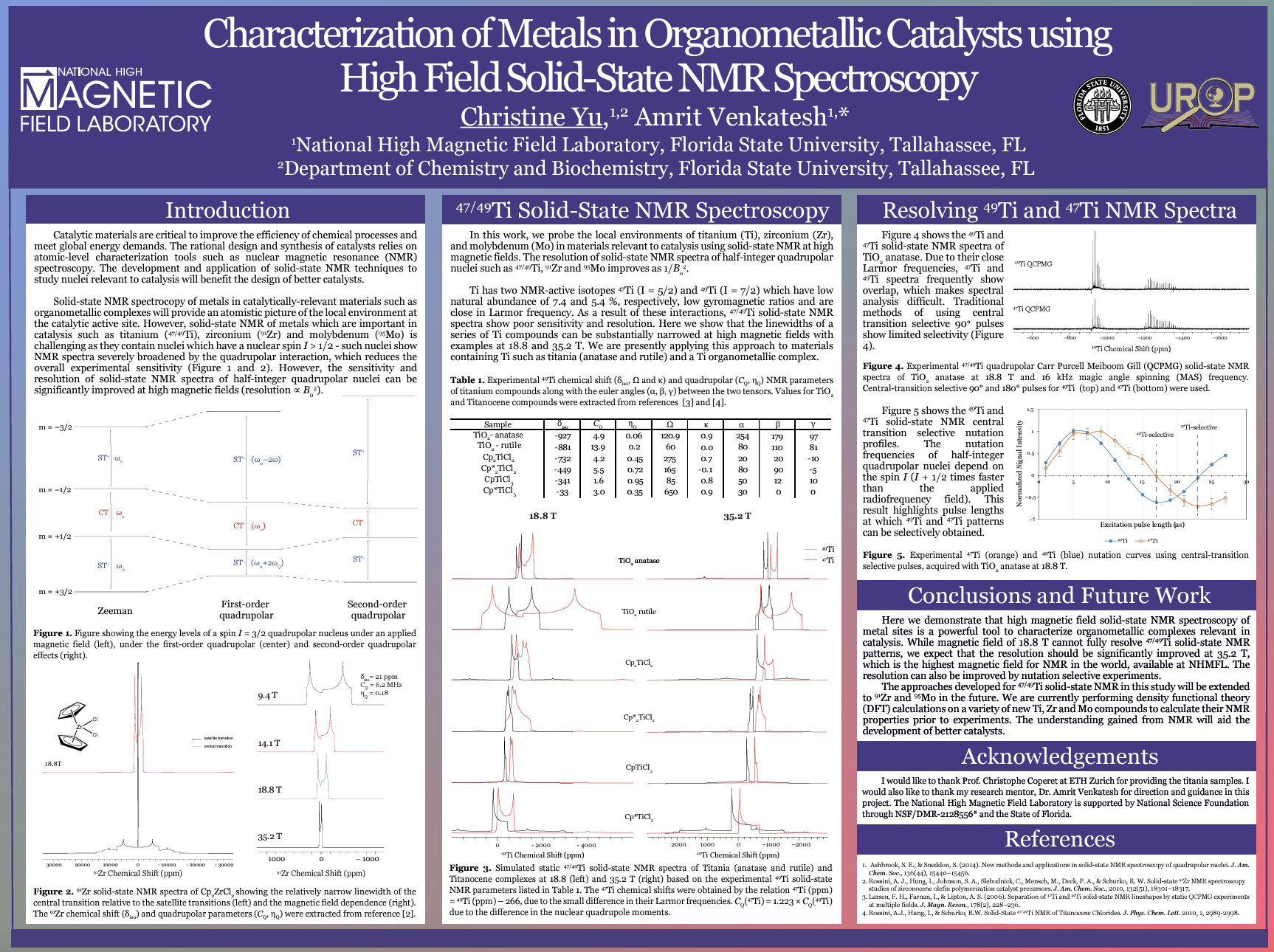Research Symposium
24th annual Undergraduate Research Symposium, April 3, 2024
Christine Yu Poster Session 1: 9:30 am - 10:30 am /81

BIO
My name is Christine Yu and I am currently a freshman majoring in biochemistry. I am originally from Taiwan but have lived in Cocoa Beach, FL for about seven years now. I enjoy drawing and spending time with my younger brother in my free time. I hope to pursue dental school after graduation and work to become an orthodontist. My research interests lie in the field of antimicrobial peptides, chemical reactions, and catalysts.
Characterization of Metals in Organometallic Catalysts using High Field Solid-State NMR Spectroscopy
Authors: Christine Yu, Amrit VenkateshStudent Major: Biochemistry
Mentor: Amrit Venkatesh
Mentor's Department: Department of Chemistry and Biochemistry Mentor's College: National High Magnetic Field Laboratory Co-Presenters:
Abstract
Catalytic materials are critical to improve the efficiency of chemical processes and meet the global energy demands. The rational design and synthesis of catalysts relies on atomic-level characterization tools such as nuclear magnetic resonance (NMR) spectroscopy. The development and application of solid-state NMR techniques to study nuclei relevant to catalysts will benefit the design of better catalysts.
Here, we study the local environments of titanium (Ti), zirconium (Zr), and molybdenum (Mo) in materials relevant to catalysis using solid-state NMR. Ti has two NMR-active isotopes 47Ti and 49Ti, which are quadrupolar, have low gyromagnetic ratios, and are close in Larmor frequency. As a result of these interactions, 47/49Ti solid-state NMR spectra show poor sensitivity and resolution. This study focuses on lessening the broadening in 47/49Ti solid-state NMR at high magnetic fields of 18.8 T. High magnetic fields can narrow the linewidths of solid-state NMR spectra of quadrupolar nuclei significantly, thereby improving sensitivity. We are presently applying this approach to materials containing Ti such as titania (anatase and rutile) and a Ti organometallic complex. Furthermore, this project attempts to separate the spectra of 49Ti and 47Ti by using differences in NMR excitation profiles, which will improve spectral resolution and data analysis. The approaches developed in this study will be extended to 91Zr and 95Mo in the future, and the understanding from this work ultimately benefit the design of better catalytic materials.
Keywords: NMR spectroscopy, catalysts, chemistry, metals


